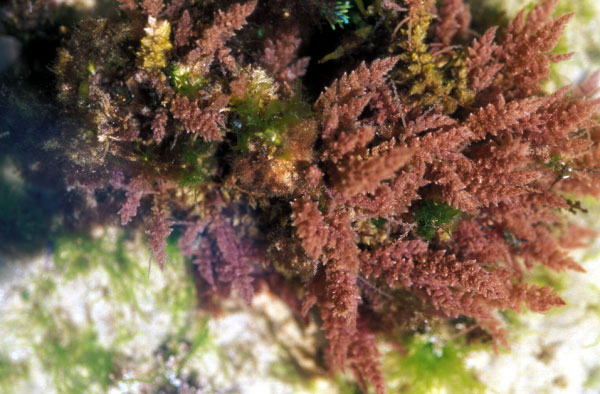Falkenbergia rufolanosa Harvey
Pale purplish-red, quickly degenerating when removed from the water and becoming distinctly orange; fronds bushy, with a cylindrical axis to1 mm wide and 200 mm long. Both phases readily reproduce vegetatively. Photographs by M.D. Guiry

Undaria marching on; late arrival in the Republic of Ireland
The Asian invasive brown seaweed Undaria pinnatifida was found for the first time in the Republic of Ireland in Kilmore Quay in Co. Wexford in July 2016. As this brown kelp is of considerable economic importance and is cultivated in Asia as well as in Europe, it opens up the discussion if this invasive species is socially acceptable to be cultivated in the Republic of Ireland for food and other purposes. This paper briefly examines the global economic importance, cultivation aspects compared to the European native equivalents such as Alaria esculenta and Saccharina latissima, cultivation yield, economic considerations and the ecological impact of the spread of Undaria into non-native areas. Based on the information and facts presented, it is concluded that Undaria from a physical, social and economic point of view can be cultivated in Ireland.


